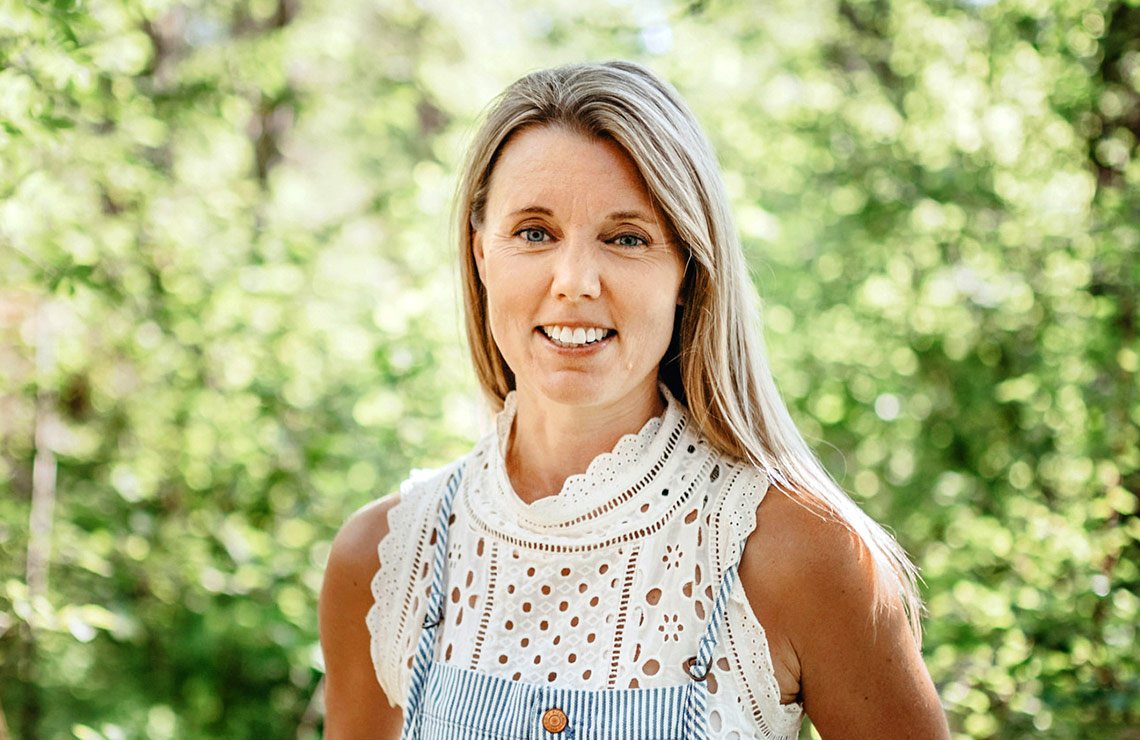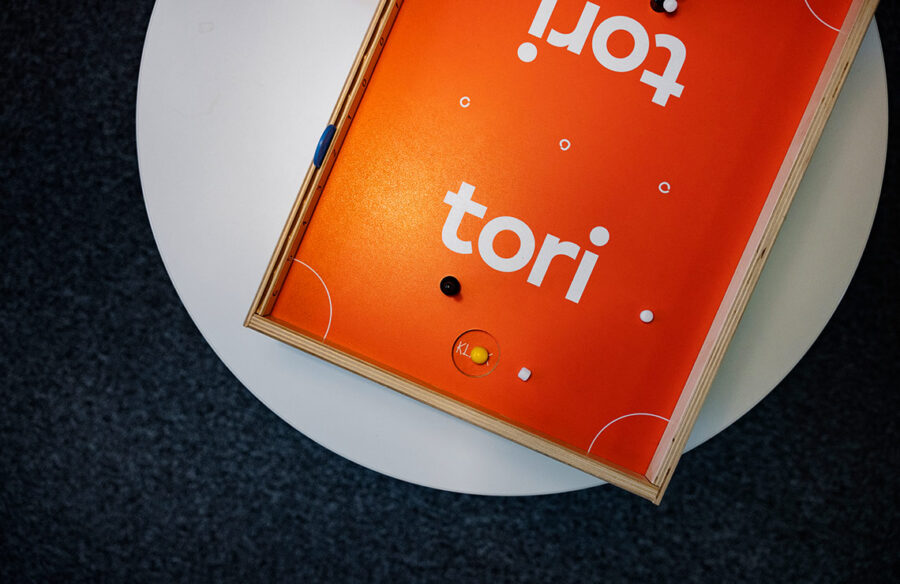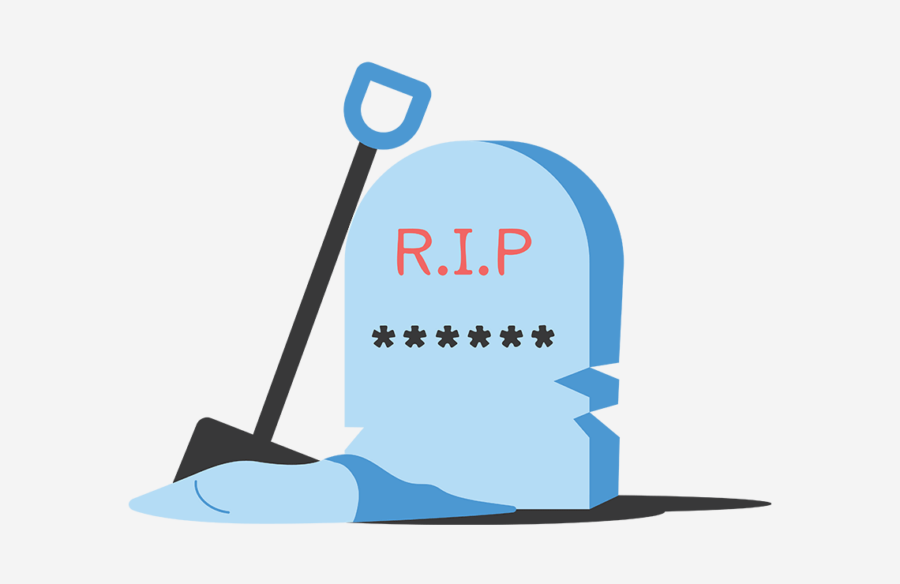Do you know what kind of brand you’re building?

Do you know what kind of brand you’re building?
As technology enables new user habits and needs, new brand categories evolve. For brand builders, it’s crucial to get one thing right when communicating a product or service – what is it?
The new world
There was a time when competition was mainly a battle for market share in a familiar and fairly predictable arena. Brand building was a matter of establishing that this brand is better than that other brand. Today, it is not so much a matter of which brand is better, but whether we trust the brand enough to be influenced to do new things together. New tech-enabled product and service categories emerge and fade out of the picture at a rapid pace. People make use of brand relationships as they navigate these new and messy competitive arenas.
The old brain
But while the world changes rapidly, the way our brains work does not. This presents some new challenges to brand builders in our time. How can innovators best find or create subcategories in which to position and grow new brands? And how can brands navigate category shifts in line with shifts in the competitive arena, and still maintain existing brand relationships? Brand building starts with understanding the phenomenon of categorisation.
We used to think that the brain perceives something by first becoming aware of it, then evaluating it and assigning it to a category. On the contrary, according to scientists today. We categorise before we evaluate. Things that don’t belong to a known category can seem almost invisible to people, and that is not a great starting point for brand building.
Acquiring new categories takes time and is pretty hard work for the brain. To make it simple for us to see them, successful brands like Vipps, MobilePay and Klarna, focus on a single feature – peer-to-peer payments, pay with your mobile, and smooth transactions – even if all these brands have a wider portfolio of things that they offer.
Subcategories
New brands have a few options. Some innovative brands take advantage of changes in trends and behaviours by defining new subcategories that propel them from niche to mainstream. Beyond Meat, for example, does this by insisting that its plant-based product is meat. Why would they do that? As a category, “meat substitute” is niche. It is relevant and visible primarily to people who don’t eat meat. Some people are eating less meat, for a variety of reasons related to health, the environment or animal welfare, but many of us are not that conscious as consumers and eat what we are used to eating.
Simply by saying that there are different categories of meat – meat from animals and meat from plants – Beyond Meat enters the large competitive arena for all carnivores. Granted, there are other expectations as to the versatility and juiciness of a meat product than just being a meat substitute. But this is a challenge Beyond Meat seems happy to take on to play in the big league by placing its plant-based meat subcategory firmly inside the big meat category.
Anchor and twist
Another option for a new brand is to create a new category and position its brand inside it in one go. This is hard work. Oatly is an example of a successful anchor and twist manoeuvre. The brand does not say that it is milk, but by saying that it is like milk, the brand is anchored in a familiar category. The twist that separates the new category from the old is explained by saying that unlike milk from the cow, which is for the calf, oat milk is made for people.
Another type of anchor and twist is when a tangible product (such as an electric scooter) becomes a service provided through an app (such as Voi), similar to how music CDs were replaced by streaming services. We have learnt how this goes, so new categories of this kind are readily available to us (and our brains) when presented as a product-to-service scenario.
Navigating category change
But what happens when a brand’s category has become obsolete through disruption? Is the brand destined to become obsolete as well – like Kodak? Not necessarily. Some brands succeed and grow stronger by maintaining relationships through category shifts, and we allow them to introduce new business models and present us with new ways of providing value. Consider Netflix. Netflix had built a strong brand as a DVD sales and rental company and was able to maintain its relationship with its customers, as well as reach new ones, as it transitioned to streaming.
When it further expanded its brand from content distribution to content production, that was another way of strengthening that brand relationship. As long as a brand is able to cater to people’s evolving expectations, the relationship endures even if the category changes.
More of this, please
Strong brands that navigate category shifts and find or build new categories are easy to spot when we look at how technology has led to changes in how people consume and find entertainment. Other categories cry out for the same level of brand building innovation to help us see and understand the relevance and value of innovative products and services. Education, health and finance seem to be particularly ripe for clarifying subcategories, meaningful identities and business models we can understand and trust – basically, brands.
The choice of category is a strategic one and should be based on establishing which category will give a brand the best possible chance of playing a part in people’s lives, now and in the future. The opportunities for creating strong brands that can take significant positions are clearly there. But make sure you can answer this question clearly before you go any further – what is it?

Kirsti Rogne
Partner and General Manager, Mars Brand Strategy
Friend of Schibsted as a brand consultant
A strong community that built a strong business

Joonas Pihlajamaa and Jenni Tuomisto at Tori’s office in Helsinki.
A strong community that built a strong business
Tori is Fanland’s largest and most popular peer-to-peer marketplace. As a beloved brand the company will have an important role in Schibsted, to make circularity the obvious choice.
On Tori, you can buy anything under the sun – from furniture to hobby equipment, and from cars to apartments. Each month, more than 3.4 million Finns use Tori. There are over 500,000 deals closed, and more than 2.5 million contacts made between buyers and sellers.
Over the past 13 years, Tori has grown to be an integral part of the Finnish way of life and is currently the 11th most visited website in the country with more hits than Instagram. The marketplace has been instrumental in radically changing the way Finns consume and buy things. Used goods are no longer bought solely to save money or for ecological reasons. Rather, it makes sense to prolong the life cycle of quality products by passing them on to new owners online.

Tori was founded in 2009 by Schibsted, based on its successful Swedish sister brand Blocket. With Jussi Lystimäki leading Tori from its launch, the brand quickly became a significant player in Finland, overtaking previously established e-commerce brands. After four years of operation, Tori became the market leader in online second-hand trade in early 2013, and has since maintained that position, growing steadily through the years.
A disruptive model
“When we started, Tori was a disruptive model in Finland. It was free to list ads, users didn’t need to register and we offered instant good deals, which made buy and sell a much easier experience than leading competitors were offering,” says Jussi Lystimäki.
“All of this created a viral movement and when the inventory was in place radical marketing finalized the success”, he adds.
Now Tori has become an institution and a beloved brand in Finland, which is reflected in the way people use its name in creative ways. We can, for example, use it as a verb “to tori” (Finnish: “torittaa”, to browse Tori or trade on Tori), or refer to our purchases as “Tori finds”.
But while Tori has had great success in the Finnish market and the volume of visitors and deals is high, there is still much more potential in the field of second-hand trade – not just in terms of business opportunities, but also in that it offers a real solution to reduce people’s consumption.
Circular consumption is at the core of Tori’s business.
Tori is the hub of Finnish second-hand trade, and according to the Schibsted Second Hand Effect report, its users have a significant impact on sustainable consumption. In 2021, Tori users potentially saved almost 172,000 tonnes of CO2e emissions, 6,411 tonnes of plastic, 31,085 tonnes of steel and 6,844 tonnes of aluminium – just by selling and buying second-hand and thus reducing the need for new production.
Circular consumption is important to the Finnish people, who are putting increasingly more emphasis on choosing second-hand products and other sustainable alternatives. And in 2022, Finnish consumers perceived Tori as Finland’s most sustainable e-commerce brand in the Sustainable Brand Index? brand study.

In 2016, Jussi Lystimäki took on a new role in Schibsted’s Emerging Markets business. He was succeeded in his role at Tori by Juha Meronen, who steered the company for several years. In 2020, Schibsted grew its business in Finland by acquiring Oikotie, a leading online classifieds business from Sanoma, and Jussi returned to the CEO position of the new Schibsted Marketplaces Finland.
With its three marketplaces (Tori, Oikotie and Rakentaja), Schibsted Marketplaces Finland became an even stronger player and Tori continues to be Finland’s leading brand in second-hand trade, while Oikotie holds the second place in the jobs and real estate verticals.
Tori has always been a community of empathetic and curious people.
The legacy of the brand and its culture over the past 13 years is strong, but it has been renewed over the years with the addition of new employees, including the Oikotie team, in the company.
“Tori has always been a community of empathetic and curious people, and that hasn’t changed over the years. Our culture nurtures trust, learning, and is also challenging the status quo when needed,” says Jenni Tuomisto, Director of Tori.
“We are doing impactful business, and that keeps us motivated in our job to deliver great products for a more sustainable future.”
Tori’s long history, stable position in the Finnish market, and strong culture are accomplishments in their own right. But as the world keeps changing, Schibsted Nordic Marketplaces is adapting its course to stay relevant to meet new customers’ needs.
Synergies across countries
A journey has begun to set the different marketplaces’ verticals free – and to find synergies across countries.
In this, the work done over the course of a decade in Finland becomes even more important. Throughout the process of setting a new direction, it has been stated that two things cannot be copied from Tori, and those are the people and the culture, and the strong market positions.
Just as with all the marketplaces brands within Schibsted, Tori will remain the familiar institution that users have grown to love and continue to meet in their everyday lives. But behind the scenes, things will be slightly different.
“We are going through a shift both mentally and on a very practical level. We need to adjust our thinking to meet the demands of the changing environment and learn to work in new and smarter ways,” says Jenni Tuomisto.
“We have a strong market position and expertise, but also an equally strong community – and this will work to our advantage as we fulfil our common purpose to make circularity the obvious choice,” she states.
This is Tori
- Tori was founded in 2009.
- More than 3.4 million users visit Tori monthly.
- Approximately 50 employees in Finland (out of 250 in Schibsted Marketplaces Finland).
- 1.8 million second-hand items are for sale at any given time, and 13,000 items are sold daily.

Laura Ruokola
Communications Manager, Schibsted Marketplaces Finland
Years in Schibsted: 1
Tech trends in short 2023

Tech trends
If we look beyond the metaverse – what other tech trends will affect our lives in one, or five years? We gathered some of them, with help from Schibsted News Media experts.
Techlash 2.0
In the last few years, we’ve seen more and more regulation hitting the tech giants and big corporations in the EU, the UK and the US. The regulations put in place by the EU are expected to eventually be copied by the US and the UK, and there will likely be more laws put in place to hold Big Tech accountable.
Bye, bye passwords!
We are moving from endless lists of passwords and password managers will soon be replaced by biometric passkeys. The FIDO authentication credential that provides “passwordless” sign-ins to online services. Already widely used by Apple, think fingerprint scanning and Face ID, it’s likely that more companies will adopt the technology for using users’ biometric data to create safer login processes, making password leaks a thing of the past.
Social shopping becomes mainstream
Shopping hauls and unboxings have been a social media tradition for years on Instagram and YouTube, but TikTok – and its Chinese counterpart Douyin – have taken the phenomenon into the mainstream. Businesses, from clothing brands to restaurants, are livestreaming to engage with viewers, and they are seeing increased revenues from the social shopping aspect.
Service fragmentation will grow
We’re already seeing the streaming world become severely fragmented, with new services announced all the time. Though the giants may still have the lead, the competition is growing fiercer and the consumer has more choices than ever. We will likely see these developments in other spaces as well, as social media is well on its way and new apps for podcasts are fighting for the users’ attention, too. As users become more interested in niche platforms and products, the fragmenting of our digital services will follow.
The war for tech talent
The war on talent isn’t news at this point, but tech talent is an especially sought-after commodity worldwide. New ways of working and the ability to demand more from employers will have tech workers picking and choosing, while the companies work to improve their offerings, whether at the office or remotely.
Our time is value
We’re seeing an increase in the fight for the users’ time, not necessarily their money. For publishers and social media, attention and usage are becoming far more important in the long run, as exemplified by Netflix’s choice to make a cheaper subscription tier that comes with advertising. Of course, this is not a new phenomenon in the publishing industry, where advertising-based revenue versus subscription-based revenue has been the question for decenniums. The fact that a user’s time is considered more valuable is becoming common knowledge, and we’ll likely see that mirrored in more companies’ business models in the future.
Your home will be even smarter
Apple’s development of Nearby Interaction will likely spur similar new features from other companies. Nearby Interactions allows Apple users to connect to other devices and accessories depending on their location. Recently announced Background Sessions would enable users to use their accessories hands-free. For example, you could set your music to turn on when you enter your home or a specific room, or you can trigger other actions on connected accessories. This type of technology will probably grow more popular soon, making your smart home even smarter.
Vertical video is winning
TikTok keeps winning ground over other social media platforms, and the rest are left scrambling to keep up. The vertical video format will likely keep gaining in popularity, whether in short- or long-form. And vertical video is expected to be used in other formats as well, with its potential to make news products stronger as publishers work to engage with the medium. Many social media-forward publishers already have large teams in place for Instagram and TikTok, and there is no question that others will follow suit.
Credits 2022

The Future Report team in Stockholm in action.
Future Report 2023 Credits
Produced by Schibsted Group Communication, Nov 2022.
Images
Emma-Sofia Olsson, Andreas Lewandowski, Johan Lagerwall, Martin Slottemo Lyngstad, Magnus Hjalmarson Neideman, Kristian Jacobsen, Max Igland, Melchior van Nigtevecht, Naina Helén Jåma, Rio Chantal, Jarle Aasland, Bjørn Erik Larsen, Tor Høvik, Adobe Stock.
Contributors
Kristin Skogen Lund, Christopher Pearsell-Ross, Yifan Hu, Eline Wong, Camilla Buch, Sam Sundberg, Malin Ekman, Sophia Sinclair, Henning Eklund, Jeremy Sudibyo, Karl Oskar Teien, Lena Beate Hamborg Pedersen, Karina Rothoff Brix, Joacim Lund, Erica Treijs, Sumeet Singh Patpatia, Mikaela Åkerman, Laura Ruokola, Ann Axelsson, Anna Andersson, Tord Overå, Christian Printzell Halvorsen, Rob van Sundert, Sven Størmer Thaulow, Ola Stenberg, Belenn Bekele, Agnes Stenbom, Andrew Kvålseth, Gard Steiro, Liv Skotheim, Kirsti Rogne, Mari A Øverland.
Social
Schibsted on Twitter
Schibsted on Instagram
schibsted.com
Göteborgstryckeriet
PAPER Arctic Matt and Munken Krystall
Five crucial tips for marketing

Five crucial tips for marketing
Chasing the latest marketing trends might not be the best way to curate growth for small companies. It will mean that you waste time and money. And even if “no size fits all”, there are a few basics to have in mind, says Mari Aldrige Øverland at Schibsted Ventures.
It’s not only fun things on Tik Tok
The first step is acknowledging that marketing is much more than just buying media and creating ads. Of course, that is a big part of it, but far from everything. Marketing is also about product (or service), price, placement (distribution) and promotion (sales today and sales tomorrow). It is not only the colouring-in department, that does some fun things on Tik Tok every once in a while.
It’s important to remember the whole bouquet of the marketing flower and not to jump the gun discussing tools x and channel y straight away! Marketing strategy is where you play and how you win. How to deliver on the chosen strategy and execute is what we call the tactics. First have clarity on who, what and when – and then you can start to think about the specific channels and tools.
Know what drives sales
It might not be important for customers that you are the cheapest, the most innovative, the smuggest challenger or even the greenest. What will yield the most growth is focusing on the key drivers that are important to many people. This might not be what you think. Understand and adapt to customers’ actual wants and needs, rather than differentiate from competitors just for the sake of it. Figure out the drivers and barriers in the category and learn what actually drives sales and how you and the players in the category score on the different drivers. In effect, this will help you find and choose a profitable position that will make you known for something customers want to buy and, most importantly, are willing to pay for.
Learn how to say no
Strategy is said to be what you don’t do. Smaller brands with smaller budgets must dare to say no, make extreme choices and prioritise. Make sure everyone is running in the same direction and that they are empowered to make decisions to get there fast.
Let’s be honest, there are loads of drawbacks as a small brand, but there are definitely some benefits to it too. The proximity to the customer, the creativity you can unravel and the short road to decisions make up some of its appeal. Your resources are so much more limited and precious than in the big companies, so use them wisely.
You be you
It’s easy when you enter a category to unconsciously be coloured (literally) by how the other players look and feel. Don’t, it’s a trap! Make, build and measure your distinct assets, such as colours, slogans, sounds, characteristics, music, graphic elements, etc. If something with your brand can be attributed to another player in the market, then it will be completely useless to spend time or energy on it. Ask yourself if this element can be attributed to your brand or to no brand at all. If so, then this is a good space to continue to build or start building a new asset.
Make sure it is easy for existing and potential customers to find, think and buy your brand once they enter the category. Stand out and make sure you are not driving sales for your competitors. This will make your marketing efforts more cost-effective, which is key when budgets are limited.
Both long and short
We’ve all heard the 60/40-rule indicating that one should use 60% on long-term brand building and 40% on short-term sales activation. This is impossible to copy paste for most start-ups, as it will take years to get back. There’s good research backing the idea that the equation should be almost reversed for smaller brands: 35% on long-term and 65 % on short-term.
This might not be right for everyone, so rather ask yourself “how much can I carve out of my budget, with a good degree of certainty, to use on long-term brand building?”. Go with that and start the brand building process, and then gradually bump this up. Just make sure you are hitting enough revenue targets to stay in business along the way.
There are no quick and easy short-cuts but if you can get these things (and other basics such as market research, segmentation, targeting, objectives, product, price, tactics and distribution) right, you have helped set up your brand for success. And remember, always do the strategy before the tactics.

Mari A Øverland
Marketing Manager Schibsted Ventures
Years in Schibsted: 0.5
Sales and marketing trends: 2023

Sales and marketing trends
How do you handle marketing in times of crisis and how energy efficient is your business? These are some trends identified by Schibsted’s sales and marketing team in Sweden.
User traffic is shifting in new ways
New social media platforms like TikTok now have more traffic than Google. Snapchat is struggling to attract the youngest users. And at the same time, traditional news media is breaking readership records. The disruption in user traffic and readership is no longer linear from legacy to social media, but we now see it shifting in totally new ways. The media landscape has evolved (yet again) and those with the most social affluence attract the most users, readers and advertisers.
This power shift can also be seen elsewhere. For example, digitally savvy individuals are now showcasing their affluence by recommending brands they like to unforeseen audiences. For companies, this means that influence is fluid and not particularly tied to those with the deepest marketing pockets.
The value of first party data
Everyone, from tech companies to publishers, is working to capitalise on their first-party data. As big tech and regulations are clamping down on third-party tracking and cookies, many are finding that they need to harness the data they acquire from their users themselves.
Building their own first-party data systems lets companies own the entire value chain, establishing better control and increasing trust with users. So, what does it mean going forward? Well, since brands have long anticipated this change, their first-party data is richer than ever. Media outlets are naturally doing the same, and Schibsted is now, for example, offering brands to “match” or “unmatch” their first-party data with Schibsted data, to get that bespoke targeting.
This product is simply called Schibsted Match since that’s exactly what offers – to reach your own designated target group in our brand-safe context.
Be transparent about your sustainability
The sustainability issue for brands is spilling over into media, collaboration partners B2B solutions. Brands now look across the entire food chain, from subcontractors, media channels, contexts where you are seen, etcetera, to make sure that their values are mirrored by all their business partners.
Most companies realise that it’s not enough to simply communicate consumption. You also must communicate value creation and sustainability. What you produce and offer is as important as “why” and “how”. Especially in times when the solution we all hoped would be the answer to our prayers, namely the electrification of society, now turns out to be more complicated than we previously thought. It will require greater transparency across the board and throughout the entire network of collaborators.
Prepare yourself to answer the following question when approached by a new B2B client: “How energy efficient is your business when producing the products and services that you offer?”
Marketing in a crisis context
Most companies are used to having a more reactive approach to crisis communication. Now we’re seeing a shift towards an “always on” mindset where you must put your planned marketing messages in the crisis context. Communication in times of crisis calls for contingency plans for imminent issues, such as a pandemic, social divide, climate change or war between nations. Being able to communicate your value in this context is of utmost importance and will come to characterise the successful companies with loyal customers and growing audiences. R
esearch from Schibsted’s sales and marketing organisation shows that most people live as usual during times of crisis but many choose to consume less of what they don’t really need. Established news channels become more important and people turn more often to credible news sources to stay up to date.
Back to brand marketing
We live in times where targeting is a challenge, but still very much desired among advertisers. Back into the spotlight comes brand-building marketing. We see a rise in demand for formats that put the brand front and centre, leaving the users and readers with some breathing space. Long have we filled the digital space with conversion-driven advertising that people sometimes find intrusive. With the return of the brand-building messages, advertising becomes fun again, creative and content-based.
Research shows that emotional communication is the most effective way to build a brand and stay in the mind of the audience. Campaigns that succeed in creating impact do so because they have succeeded in reaching out, reaching in, as well as creating change and influence.
The end of IRL
Are the days of meeting and mingling with industry professionals over? Business events struggled to fill their seats this past year as we all try to make sense of the post-pandemic world. What about the chatty atmosphere of the office landscape? This last year has indeed shed new light on the office space in general, and we’re not as inclined to pop by anymore simply because we miss our colleagues.
The webinars and the digital meetings are here to stay. Hate them or love them – it seems that we hate commuting even more and that the love for the independence of our home offices trumps even the greatest of office atmospheres.
“People don't want to be obligated to go to the office”

This text is based on a conversation between Anne Helene Petersen and Schibsted's former Head of People and Communication, Mette Krogsrud, at Bergen's Media Days 2022.
“People don't want to be obligated to go to the office”
After the pandemic, the hybrid model has been adopted in many offices. But how it affects work and how to apply it is still unclear. American writer and journalist Anne Helen Petersen is certain – it’s not a quick fix.
“This is hard work. Sometimes people think we’re going to come up with a quick policy on hybrid work. But we are fundamentally changing the way that we work. It’s going to be hard and it’s going to require continued work,” says Anne Helen Petersen.
She has focused a lot on how we work. She was working as a senior culture writer and correspondent for Buzzfeed when she started to take an interest in the subject. Along with her partner, she wrote the book Out of Office: The big problem and bigger promise of working from home, published in 2021, and today she has her own a newsletter, called Culture Study.
Benefits and drawbacks
When the pandemic hit Ann Helen already had been working from home for several years. She moved from New York to the rural state of Montana to work more on stories about work.
“I experienced a lot of the benefits, which included being able to go for a run at 1 p.m. just because I wanted to. I also experienced a lot of the drawbacks, such as the ability to work almost all the time.”
Now, as we have formed new habits again, the question is if the future will stay flexible.
Data collected by Slack, from surveys with more than 10,000 respondents across ten countries, shows that people working in flexible scenarios or in fully remote scenarios have a greater sense of belonging.
“This is the opposite of what most people would assume. People think that when you’re at the office you feel more of a sense of belonging with your co-workers,” says Anne Helen.
Communication crucial
Other numbers from Slack show that employees who perceived their companies to be good at communicating about why and when to come back into the office have twelve times higher job satisfaction than those who don’t feel that their companies are transparent about it.
“To me, this means that transparent companies are cultivating much healthier office cultures.”
Overall, Anne Helen is convinced that most people want a mix.
“They want to have the office as a source of collaboration and community. It’s a place to go to that can add structure to your day and your week. But people don’t want to be obligated to go when they don’t want to and when it’s not necessary.”
Those are also the indications from within Schibsted. Internal surveys show that 75% of the employees prefer to work in a hybrid or fully remote model. But there are some challenges. Globally, many managers are pushing back on remote work. Schibsted’s statistics indicate the same – managers are slightly less fond of the idea. But Anne Helen doesn’t think it’s because they don’t like it.
A presense bias
“Many leaders’ way of doing their job is really based on meeting other people. There is a managing style that I call “walking around” – they understand if someone is doing a good job by actually seeing them and starting a conversation.”
This is what she believes will lead to one of the drawbacks and what she calls “presentism”. A presence bias that means that the people who are present in the office all the time are the ones who get elevated within the organisation.
“In the US, there’s a real preference for the men to be in the office, so the fear is that we are going to take a lot of steps back in terms of gender equity and leadership.”
But once we do meet in the office, how do we spend that time? Anne Helen believes that we will see a larger understanding of being with one another, like when going to a conference, being with a larger group of people and cross-pollinating ideas. And on the smaller team level, we’re going to see more concentrated retreats – where teams socialise but also do planning and get close collaboration work done.
“To bring in people to plan and brainstorm and then go out and do the work is smart, especially if you are a distributed team.”

Ann Axelsson
Senior Project Manager, Strategic Communication
Years in Schibsted: 24
Regulation will pave the way for the future of crypto

Regulation will pave the way for the future of crypto
The crypto winter has made value sink drastically. But Karina Rothoff Brix, from the crypto service Firi, is certain that the crypto phenomenon will be a natural part of our trading culture and system – at least, once regulations are put in place.
To some people, crypto is the latest attempt to reinvent the fastest way we exchange money and goods. And when looking back on history, the evolution of money has always been moving towards more convenience and easier transactions. But crypto is so much more. Some even define it as the next revolution – not only for money but for the entire trading culture and system in our society.
The decline we see is, in my view, a normal part of the market cycles, which influences the perceived and traded value of crypto. But the value behind the crypto projects is increasing as innovation continues. Adoption is here – look no further than the number of ATM machines worldwide where crypto is easy to purchase, or the growing number of both private and public organisations that accept crypto as payment or as remuneration.
So, how did the industry grow from small crypto “nerd” projects to its current state, consisting of more than 13,000 different cryptos and an asset that you can pay your taxes with if you live in the state of Colorado, or purchase gas with when driving in Australia?
Several attempts before Bitcoin
We often hear that the story of crypto dates back to 2008, when the most well-known and oldest crypto of all was released with a whitepaper – Bitcoin. But there were several attempts to define e-money or digital currency before Bitcoin was invented or described.
It all began in the early days of the internet when David Chaum, in 1982, wrote a dissertation paper called Computer systems established, maintained, and trusted by mutually suspicious groups. At that time, David Chaum was a graduate student at Berkeley and his dissertation is the first known description of a blockchain protocol. His work laid the foundation for the crypto and blockchains we know today, and it was driven by his motivation to protect the privacy of individuals. A privacy that he early on feared that governments would not be able to ensure on the Internet.
David Chaum founded a company called Digicash, Inc. in 1989. His company attempted to release an e-currency called E-cash but failed and was then sold in 1995. The world was simply not ready for the technology – as the first online payment from a credit card was made in the early 1990s.
On its way
But the phenomenon was on its way. One of the first worldwide money, or digital currencies, was created in 1996. It was called E-gold and was backed by gold. The transactions were irreversible and approximately five million users were registered. But E-gold was quickly adopted by criminals who saw it as a safe haven, as regulation was lacking. Soon the currency was banned by the US government.
One of the first companies to succeed in offering a fast and paper-free transaction method using the internet was PayPal. Both PayPal and E-gold are like crypto in the sense that they use the internet to make transactions. But there’s one thing that is completely different. To simplify – cryptos are decentralised and both PayPal and E-gold transactions were controlled by a central unit.
A paper that made a difference
A milestone in the crypto story happened in 1997, when a researcher from the US National Security Agency (NSA) published a paper called How to make a mint, the cryptography of anonymous electronic cash. It described a decentralised network and payment system.
The concept described in the NSA paper was further developed by two researchers in 1998. Nick Szabo created what he called Bitgold, which introduced the concept of smart contracts to the system. Wei Dai wrote B-money, an anonymous distributed electronic cash system, which described the fundamentals of all the crypto systems we know today. Nick Szabo later helped the founders of Bitcoin code the system based on his findings, and Wei Dai’s work was also cited in the Bitcoin’s paper. Today, the smallest unit of Ethereum (ETH) is called a Wei.
A more secure system
But it wasn’t until October 2008 that Bitcoin became the first operating crypto currency, after adding blockchain technology. This was in the middle of the financial crisis, and some say that the ambition was to create a more secure and sustainable system that could not be manipulated by centralised entities. With a fixed amount of Bitcoin being produced, the mission was also to protect against inflation.
The Bitcoin vision was published by Satoshi Nakamoto, and it described a purely peer-to-peer version of electronic cash that would allow online payments to be sent directly from one party to another without involvement from a financial institution. The idea was to change the protocols that the financial institutions were building on and transfer funds instantly, anonymously, and without middleman fees and governmental surveillance and control. In January 2009, the first block of the Bitcoin blockchain, called The Genesis, was made.
The first real purchase with Bitcoin was made on May 22, 2010. The pizzas purchased with it became historical because until that point, the Bitcoin did not have a value but had only been transferred between peers – and mostly for fun.
The creator disappeared
Satoshi Nakamoto was nominated for the Nobel Prize in Economics in 2015, but he disappeared shortly after making Bitcoin. No one has yet been able to identify who’s really behind the paper or who is Satoshi Nakamoto. Before disappearing, Satoshi Nakamoto chose a software engineer to oversee the building of Bitcoin’s original coin. His name is Gavin Andreson, and he later founded the non-profit organisation The Bitcoin Foundation. As with Ethereum and its honouring of Wei, the smallest part of a Bitcoin that can be sent is called a Satoshi.
In the years that followed Bitcoin’s entrance on the market, the usage spread, but not only to legitimate businesses. Once again, governments had to shut down several illegal websites. The idea that crypto is only for criminals is a sticky myth for the industry to rid itself of, and the need for more detailed regulation is growing.
With a market capital of more than USD 3 trillion at its peak in 2021, the crypto industry is becoming an asset with which our society needs to handle and interact.
Legal tender in two countries
Two countries have made Bitcoin their legal tender. In El Salvador, Bitcoin has been the national currency since September 2021, along with the US dollar. Every citizen in El Salvador has a digital wallet with BTC in it, and it is mandatory for all merchants to accept BTC as payment.
The small African country of Central African Republic also voted BTC as their legal tender in late summer 2022, along with the franc issued by the French government. Many among the population, primarily in African states, are “unbanked”, and crypto payments give them access to trades and the basic service of securing their money and receiving payments for goods.
Close to 90 other countries are in the process of deciding the role of cryptos in their jurisdiction.
Regulation in place 2024
Retail crypto investors are also increasing in numbers. In 2021, 8% of American households had invested in crypto; in the Nordics it was between 11 and 15%. The growth is expected to increase with global adoption, along with the EU crypto regulation that is expected to be in place in 2024. With this regulation,
institutional money is expected to be a significant part of the growth for the crypto industry going forward.
Another powerful driver for adoption is Web3 – the next generation of internet. Web3 is expected to be largely built on blockchains, meaning crypto would have an essential role as a digital asset – not only for transaction of payments. In essence, Web3 provides all industries with new virtual markets where the technologies enable people to interact and transfer ownership in virtual settings, seamlessly and conveniently.
The pure digital presence, the virtual interaction, and the gaming habits of younger generations in Western countries show us how owning digital items and being part of virtual events is perceived to be just as real and as valuable for this generation as experiences and assets in the physical world.
This, combined with technology, talent attraction and funding in this space, lays the groundwork for the innovative and disruptive businesses of the future.
The definition of crypto
The use of the word “currencies” when talking about crypto can be misleading because crypto is much more than currencies. A general definition of crypto is: “Digital assets on a blockchain, that can be traded, utilised as a medium of exchange and used as a store of value”. The use of each crypto can vary and be coded to enable different – or multiple – things:
- A security token where the token holder owns a part of the entity that have issued the token.
- A utility token where the token grants an option or a right to the token holder.
- A commodity token where the token represents ownership of another digital or physical asset.
- A governance token where the token represents the token holders right to vote or in another manner be part of the governance in a project.

Karina Rothoff Brix
Country Manager Denmark, Firi
Years in Schibsted: Almost one
Rough seas are an opportunity

Rough seas are an opportunity
When I wrote the introduction to last year’s Future Report, the world looked quite different. Back then, we were seeing the last of the pandemic (or at least we thought so), global arkets and supply chains were picking up pace, and I believe that most of us were expecting clearer, bluer skies ahead.
Now, twelve months later, the clouds have truly gathered above us. Russia has invaded Ukraine, causing unimaginable human suffering, as well as a global energy, food and commodity supply crisis. The pandemic lingers both in terms of public health hazards and in terms of global supply chain problems. And as a result of it all, prices and interest rates are up, while consumer and investor confidence is down, across most markets and societies.
These developments have naturally led to some serious consequences that impact people’s lives. But when looking at these consequences through the lens of the Future Report, it begs the question: how do we best cope with these developments in the world of tech, innovation and business?
I believe that the most important thing we can do is to recognise the differences between cyclical and structural changes. Think of it as the difference between a storm and climate change. A storm will pass, while climate change is a lasting and fundamental form of change.
Many of the changes we’ve seen over the past twelve months are passing storms. They are powerful because there are many forces pulling in the same direction. We went straight from pandemic to war. We have a highly unstable geopolitical and macroeconomic situation. And there are numerous value chains that haven’t been working properly for two to three years running. However, while many will find it tough to navigate through these storms, they won’t change how we operate long-term in any fundamental way.
Even if you have to adapt and prepare for a passing storm, it is much more important in the long-run to adapt and prepare for climate change.
Digital transformation, on the other hand, is a lasting and structural change. That’s where you find the climate change in our line of business, if you will, because it forces us to come up with fundamentally new ways of working, doing business, innovating and making an impact.
Right now, most businesses are trying to figure out how to navigate seas that are made rougher by both passing storms and climate change at the same time. What’s important is the ability to tell the two apart. Even if you have to adapt and prepare for a passing storm, it is much more important in the long-run to adapt and prepare for climate change.
And once you have a clear idea about short- and long-term changes, you should also have clear ideas about short-term plans and long-term ambitions – and how the two are connected. Or to put it plainly, when making tough decisions for short-term, you need to make sure to keep an eye on what’s important for you long-term. Otherwise, you will make the wrong decisions.
In Schibsted, we have always tried to view rough seas as an opportunity, whether made rougher due to passing storms, climate change, or both. Because the thing about rough seas is that so long as you have a good ship, are well-prepared, have all hands on-deck, and truly know how to navigate – rough seas are an opportunity for speed, distance and discovery.

Kristin Skogen Lund
CEO
Years in Schibsted: 4 as CEO and 6 as Commercial Director and CEO of Aftenposten 2004–2010












